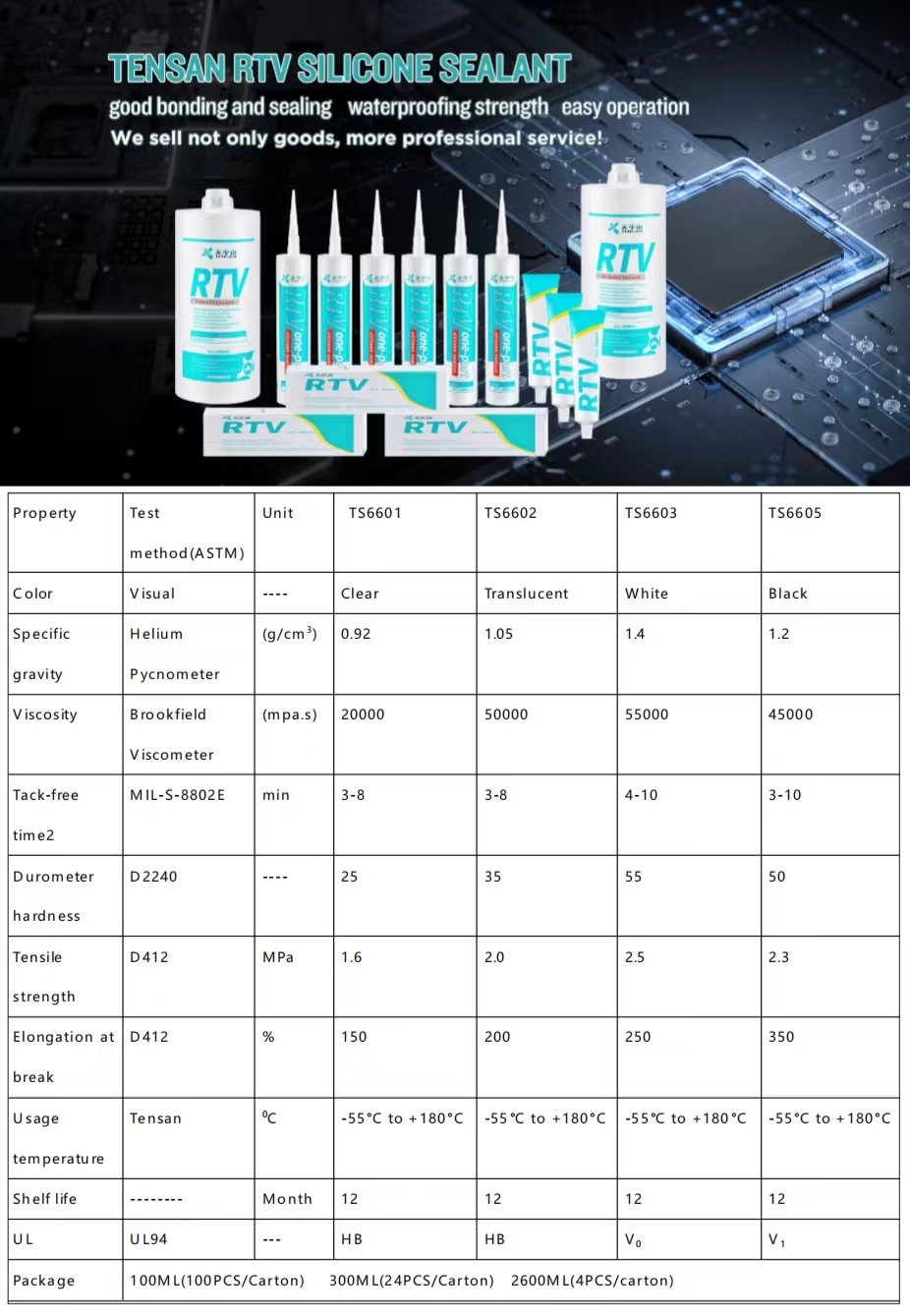The difference between single component silicone and two-component silicone
Time:2024-07-02
Views:405
Single component silicone and two-component silicone are two different types of silicone materials, which differ in composition and usage.
1. Composition: Single component silicone is composed of a single siloxane polymer, usually containing additives such as flame retardants, curing agents, catalysts, and fillers. Two component silicone is composed of a mixture of two different components, usually a mixture of siloxane polymers and crosslinking agents.
2. Curing method: During use, single component silicone gel needs to be catalyzed by moisture in the environment to achieve curing. Two component silicone is cured by a chemical reaction or the addition of a curing agent after mixing two components.
3. Usage environment: Single component silicone is suitable for general room temperature curing, while two-component silicone can be thermally cured or room temperature cured as needed.
4. Scope of use: Single component silicone is suitable for some simple insulation, sealing, and filling applications, such as packaging of electronic components and anti-corrosion coatings on steel components. Two component silicone, due to its higher strength and heat resistance, can be used for more complex applications, such as the production of complex molds and high-temperature sealing.

In general, single component silicone and two-component silicone differ in terms of composition, curing method, usage environment, and scope of use, and suitable silicone materials can be selected according to specific application requirements.
Tensan‘s single component adhesive does not require the addition of any supporting products and can be directly fixed. Its surface drying time represents the fixed speed of silicone, which affects production efficiency, so surface drying time is very important. Its advantages: fast fixed line time, strong adhesion, simple usage, non-toxic and non corrosive
Tensan single component adhesive is an elastic rubber that can resist mechanical vibrations and high and low temperature cold and hot impacts. It can maintain stable elasticity and mechanical properties for a long time at -50 ℃ -150 ℃, and has excellent adhesion ability to glass, ceramics, metals, rubber, and other materials

The use of a mixture of two components of Tensan encapsulated silicone can effectively improve the moisture resistance, insulation, and vibration resistance of components and printed circuit boards through deep curing; Its high and low temperature resistance, stress release, material strength, and flame retardant properties ensure the long-term reliability of the components. Suitable for thermal sealing in electronic modules, power supplies, sensors, solar cells, LED driver modules, transformers, and other applications.








